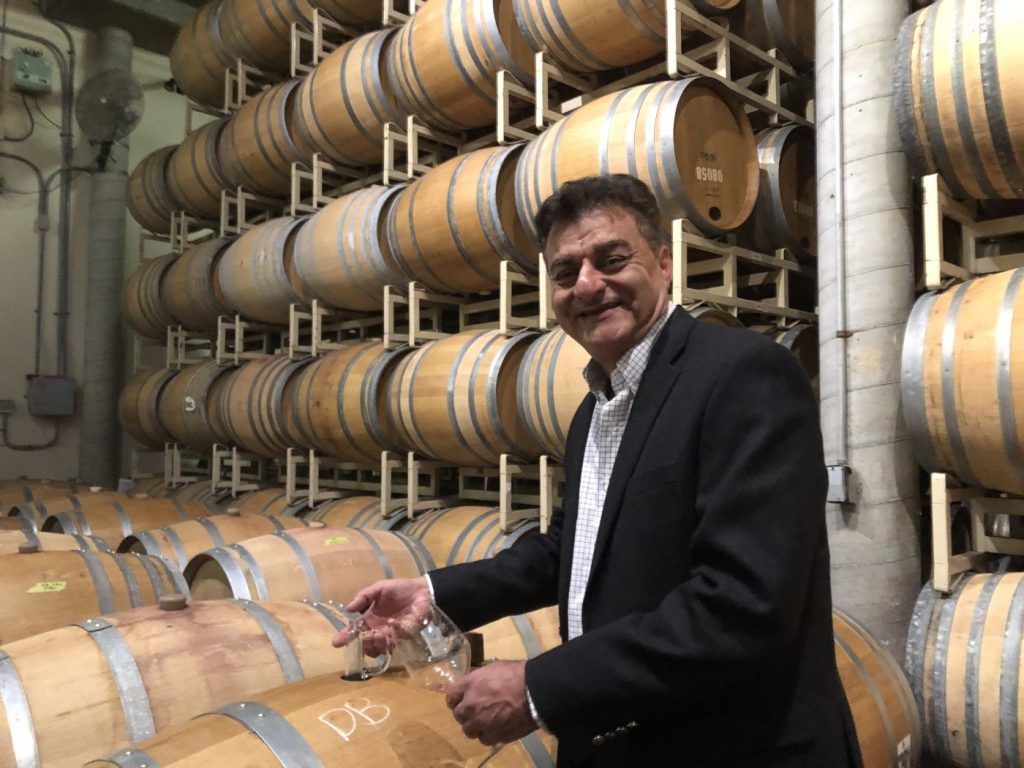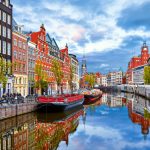On the 60th anniversary of its founding, David Bruce Winery announced that it’s been sold to an out-of-state college..
Located on Bear Creek Road in Los Gatos, the 40-acre parcel became David Bruce Winery back in 1964. The site, which ranges from 1,800 to 2,200 feet above the Pacific Ocean 8 miles away, is planted to chardonnay and pinot noir, along with small amounts of Riesling and Syrah.
Bruce, a dermatologist, was smitten by a tasting he had done in college of a bottle of 1954 Richebourg Burgundy, and founded what became one of the most iconic names in Santa Cruz Mountains winemaking history. Bruce died on April 28, 2021, just shy of his 90th birthday.
Many rumors swirled as Bruce’s health declined, but the company appears to have its eye on the future, even as the wine industry faces its own steep challenges. David Bruce Winery has rejoined the Santa Cruz Mountains Winegrowers Association and is participating in events, including the Surf City Wine Walk in Santa Cruz on Sunday, June 9.
At a recent tasting of older vintages of chardonnays from the David Bruce cellar in honor of the anniversary of the Judgement of Paris of 1976, it was confirmed that the winery is now owned by Hillsdale College, a private, conservative, Christian liberal arts college in Michigan, founded in 1844 by members of the Free Will Baptists. Pat Sajak, the longtime host of “Wheel of Fortune” who is about to take his final spin, has been chairman of Hillsdale’s board of trustees since 2019.
The arrangement came about due to Bruce’s relationship with another member of the Hillsdale board, who was a big fan of the winery and an avid collector.
The college describes itself as having “a classical liberal arts curriculum, necessary for preserving the blessings of civil and religious liberty.” Hillsdale boasts an endowment of $972 million, compared to Stanford’s endowment of $36 billion. Santa Clara University, with the second-largest endowment among our local universities, reported $1.47 billion in 2022.
The winemaker of record at David Bruce is Mitri Faravashi, whose family was forced to flee what was then called Persia during the Iranian revolution of 1978. The family fled first to India, then to Spain and finally to the US. Faravashi attended San Jose State and was planning to become a dentist when he ran into a professor who was teaching a wine appreciation class and his life’s path suddenly vectored. His family had always made wine in Iran, so it came naturally.
His first job was at Mirassou Winery in San Jose as an enologist, working for renowned winemaker Tom Stutz, a longtime San Jose resident. After Gallo bought the Mirassou name and inventory in 2002, the winery became La Rochelle and moved to Livermore.
Faravashi then landed at David Bruce, where he was encouraged to follow his passion and worked with Tony Craig, Ken Foster, Deb Ellissagaray, Greg Stokes, Eric Glomski, Michael Sones and briefly, Dean DeKorth, who went on to Bernardus. Faravashi was one of the last people standing after a shakeup that occurred at David Bruce in 2003.
Faravashi says working with Bruce was always exciting, as he loved to experiment. But Faravashi’s tastes gravitated toward riper, higher alcohol wines, which were not always possible from the estate.
“At one point, he came to me and said, ‘Can you please make some wines I can drink in my lifetime?’” Faravashi recalls.
Related Articles
Sunnyvale Art and Wine Festival canceled this year
Meet the chef with Michelin cred who runs the kitchen at Healdsburg’s Jordan Winery
Wine bar’s legal battle with Richmond raises questions about the future of the waterfront
5 Bay Area winery picnics and alfresco destinations for summer
The delightful craft bar and kitchen Roses on Adeline opens in Berkeley
Getting the tannins to mellow out sooner rather than later became Faravashi’s goal, and he was able to accomplish this mostly by careful vineyard management. Plus, there are certain tricks one can employ in the cellar, like reducing daily punchdowns, doing less lees stirring, pressing off at about 0.5 Brix (not totally dry) and using a gentler press cycle.
As the winery continued to grow, they sourced more fruit from Paso Robles, Edna Valley, Santa Barbara, the Santa Lucia Highlands and Russian River. They also acquired a vineyard in Sebastopol, which the company was forced to sell and now wants back, but the current owners want to keep it. Faravashi is now sourcing from a vineyard next door.
Faravashi says it’s interesting to see where younger consumers are gravitating. “They want pure and simple; they don’t want a lot of oak or complexity. They don’t seem interested in aging wines.”
This explains why David Bruce is sourcing from other areas and doing tank ferments to keep the Edna Valley and Santa Lucia Highlands chardonnays distinctly different from the estate wines, which are barrel-fermented. An example is the 2019 David Bruce Estate Chardonnay.
Rumor has it that a 60th anniversary tribute pinot noir is in the works.
The David Bruce tasting room at 21439 Bear Creek Road is open Thursday-Monday, 11 a.m.-4 p.m. For reservations, call 408-399-5800 or email [email protected].


